SelfDefinition.Org
Afterlife Articles
Victor D. Solow
After-Death Experience
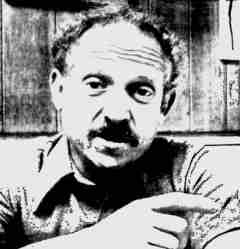
Victor D. Solow,
Author of "I Died at 10:52 A.M."
Wartime Service
Thousands Flee Jap Invasion
The following vignette extracted from a long article indicates that in his war service, Victor Solow was well acquainted with misery and suffering.
Oakland Tribune, Sunday October 29, 1944
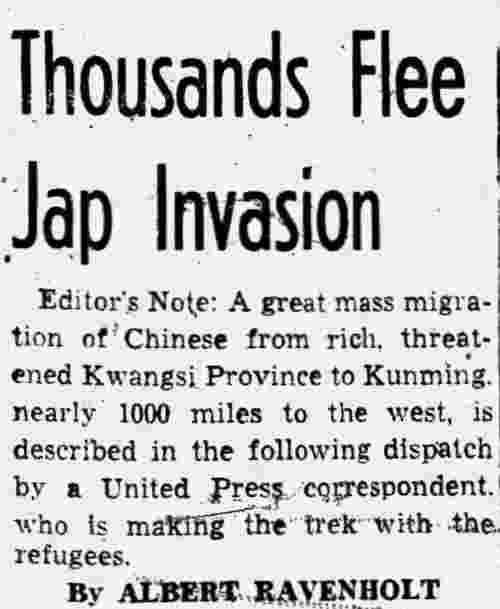
...
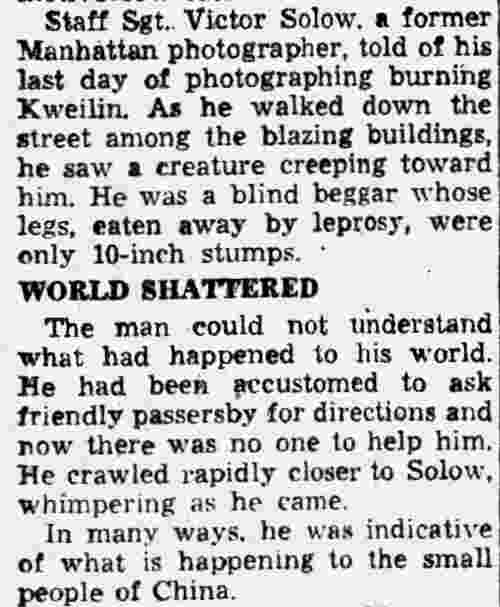
Thousands Flee Jap Invasion
Editor's Note: A great mass migration of Chinese from rich, threatened Kwangsi Province to Kunming, nearly 1000 miles to the west, is described in the following dispatch by a United Press correspondent. who is making the trek with the refugees.
By ALBERT RAVENHOLT
ON THE ESCAPE ROUTE WEST OF LIUCHOW, KWANGSI PROVINCE, CHINA, Oct. 28. –(U.P.)–
Hundreds of thousands of miserable refugees are fleeing before the Japanese invasion of Kwangsi Province.
A fear-ridden procession of desperate people is moving from Liuchow and burning Kweilin, across the western provinces of Kweichow and Yunnan, to Kunming.
They carry babies and bedding, pots and pans, and sometimes silly useless trinkets. In a constant stream, they move West under railway box cars, afoot and even on locomotive, cow catchers.
Staff Sgt. Victor Solow, a former Manhattan photographer, told of his last day of photographing burning Kweilin. As he walked down the street among the blazing buildings, he saw a creature creeping toward him. He was a blind beggar whose legs, eaten away by leprosy, were only 10-inch stumps.
WORLD SHATTERED
The man could not understand what had happened to his world. He had been accustomed to ask friendly passersby for directions and now there was no one to help him. He crawled rapidly closer to Solow, whimpering as he came.
In many ways, he was indicative of what is happening to the small people of China.
... article continues ...
CBI Roundup, 1952
Full article (1.1 megs): images-wartime/
Below are newspaper articles that mention Victor Solow's wartime service as a photographer, published by CBI Roundup and Ex-CBI Roundup in 1952 and 1945.
References to Victor Solow are highlighted.
Ex-CBI Roundup (Chinese Burma India Theater)
July 1952 Issue. By Lee Barker
Fair usage. Extracted from CBI Unit Lineages and History cbi-history.com/
When a CBI photo appears in Roundup or elsewhere, the reader probably glances at it without realizing the danger and rough times the photographer went thru to get the picture. Almost all the pictures labeled Signal Corps or U.S. Army Photo can be attributed to the click of a camera belonging to the 164th Signal Photo Company of the CBI Theater. Of course, the other arms had their share of picture-taking, some of which will be covered within these pages.
The 164th attempted to tell the story of the CBI, both social and fighting. The story of the 164th is an important part of that historic theater.
The first echelons of this group reached the CBI in December, 1943. Since then their detachments were in almost every station from Calcutta to Chungking. They had a difficult road to cover as they progressed with the other units from the early Ledo Road to the opening of the Stilweil Highway into Kunming. Some of their roughest times were when they weren't able to take a single exposure. The Japanese, sad to say, were camera shy, and didn't make their showing too often. Bashful to Yank rifle fire, they stayed in their caves, and the camera man could only get a few shots of the unfortunate dead Japs.
Very active in the photo field was T/3 Victor D. Solow, of New York. He was one of the top men in the motion picture branch of the 164th. In fact, he was one of the few Americans who accompanied the Chinese in their drive from the Salween in southwestern Yunnan to the juncture with the forces moving up to the Burma Road from the west. Most of the stories he had to tell have to do with the pictures he didn't get. One time he was very disappointed that he missed some splendid opportunities, but he evidently wasn't there at the right place at the right time. This was particularly true when he was along during operations against the Japs on the Sungshan, which was later dynamited in a destructive mission. Solow sweated out his wait on a neighboring mountain top for four days, trying to get a panoramic film of 14th Air Force P-40's strafing the hidden enemy. This raid would have taken only a few minutes to complete, but each day some circumstances arose to prevent the scheduled mission. On the fourth day he gave up the idea, and as fate would have it, the fighters made their passes on the Japs on the fifth day.
On another photo hunt, Solow eluded his two Chinese companions who had been assigned to keep Solow out of trouble. During this time the Chungking radio was relating the fall of Lungling to the Chinese. Actually the streets were echoing with gunfire, and Solow dived into the middle of it. Result, some of the best pictures of this battle. Alone yet, Solow hit the sack for the night. However, the morning brought a warning that the Jap patrol was somewhere in the neighborhood. He loaded his equipment on his horse, attempting to hurry toward the American camp. He departed just in time, for a machine gun started spraying its bullets uncomfortably close by. He excused his not getting any pictures at that time by stating, "The Allies were making their Normandy invasion at the time, and I couldn't see the advantage of competing with that kind of news."
While Solow was with T/4 George Kocourek of Los Angeles, he was billeted [quartered] by the Chinese at Tengchung. The weather had been so bad that there were no recent food drops. Their only subsistence had been the Chinese rice ration for five long days. Solow said the change from K-rations was delightfully appetizing at that time.
IBT Roundup - June 7, 1945 - China-Burma-India Theater of World War II
Fair usage. Extracted from derivative work © 2009 by Carl W. Weidenburner: cbi-theater.com/
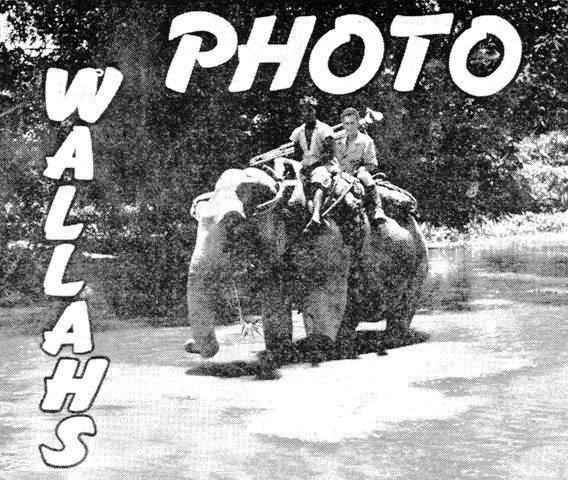
Cameraman T/4 Louis Raczkowski rides through the swamps on the back of an elephant in Assam.
[The 1952 article above is pretty much a rewrite and simplification of this 1945 article. They are both included for completeness despite the repetition. This version has photos that were omitted in 1952.]
The mission of the 164th Signal Photo Company in the India-Burma and China Theaters is measured not only in the amount of celluloid footage taken - which is considerable - but also in the success it realizes in telling through the medium of pictures, the story of the passing parade in East Asia. And the story of the 164th itself is an integral part of each step in that historic parade.
The first echelons of the unit reached the Theater 18 months ago. Now, with detachments stationed in almost every station from Calcutta to Chungking, the credit "Signal Corps Photo" in a Roundup cut line or a U.S. press release from this area usually indicates another click of a 164th camera.
As with every other outfit that operated from early Ledo Road days until the opening of the Stilwell Highway, it's been a rough row to hoe. However, the toughest days, say the men who focus the cameras, have often been when not a single foot of film or a single negative was exposed. The job of taking pictures of Japs - dead or alive - becomes increasingly difficult when the subject fails to co-operate by putting in his appearance. And for many days along the trail or in the mountain vastness, very few if any of the enemy were sighted.
T/3 Victor D. Solow, Moscow-born New Yorker who came to the U.S. in 1936, [the family blog says 1935] is one of the top members in the motion picture department of the unit. Solow was one of the few Americans who accompanied the Chinese in their drive from the Salween in southwestern Yunnan down to a junction with the forces moving up to the Burma Road from the west.
Most of the stories Solow has to tell about the campaign concern the pictures he didn't get. He was profoundly disappointed in missed opportunities to be at the right place at the right time. During one stage in the operations against the Japs on Sungshan (later dynamited in a daring mission that sent all the Nips to join their ancestors), Solow sweated it out on a neighboring mountain top for four days waiting to get a panoramic picture of 14th Air Force P-40's strafing the holed-in enemy. The whole deal would have taken a couple of minutes had it come off, but each day something came up to call off the scheduled mission. He gave up in disgust at the end of the fourth day, and, as luck would have it, the tiger-toothed pee-shooters came over on the fifth day to make their passes, which never were recorded for posterity.
On another occasion, Solow eluded his two Chinese "assistants" who were charged with making certain he kept out of trouble. It was during this period the Chungking radio was announcing the fall of Lungling to the Chinese. In reality, there was still a lot of street fighting going on in the town. So he hightailed into the middle of it, and returned with some of the best pictures of the campaign.
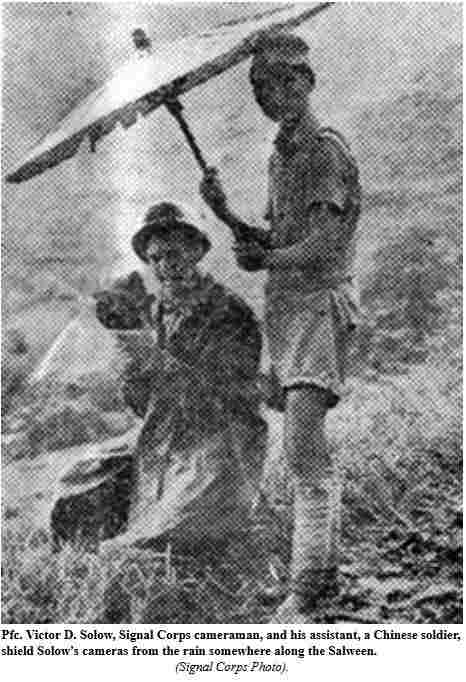
Pfc. Victor D. Solow, Signal Corps cameraman, and his assistant, a Chinese soldier, shield Solow's cameras from the rain somewhere along the Salween.
(Signal Corps Photo).
Still alone, Solow bedded down for the night. But the following morning, warning came that a Jap patrol was somewhere in the neighborhood. He loaded his paraphernalia on his horse and set off for American headquarters. It wasn't a minute too soon, as a machine gun started sputtering, and the dust all around him gave a pretty good indication that the Japs were getting the range. he didn't get any pictures during that escapade because, as he puts it, "The Allies were making their Normandy invasion at the time, and I couldn't see the advantage of competing with that kind of news. Anyway," Solow says, "I had 27 miles of walking ahead of me and all the advantages outweighed the disadvantages."
The current Stateside meat shortage gets no sympathy from Photographer Solow. With T/4 George Kocourek, of Los Angeles, he was with the Chinese at Tengchung, and weather had precluded any recent food drops. Subsisting on the barest of Chinese rice rations for five days, the two Americans found a dog, not alive and kicking, but dead. Necessity overcame natural aversion at this point, and they gathered up some wild tomatoes, cooked the meaty portions of the mongrel for three hours, and turned up with some "very satisfactory stew." In fact, says Solow, the change from K-rations was delightfully appetizing at the time.
[Article continues from here about service members other than Solow. The material is included only for color.]
T/3 Dan Novak, from Minneapolis was with the Northern Combat Area Command from April of last year until his recent shift to New Delhi. He was with the Chinese from Myitkyina to Lashio and made a full record of the entire operation. He landed upon the Myitkyina strip with the Airborne Engineers, first unit to hit the field in gliders. With the Japs on one end of the strip and the Americans unloading equipment on the other, Novak filmed the story. He was awarded the Bronze Star Medal for his performance under great difficulty.
Novak's outstanding movies, however, were not those for which he received the medal but later pictures at Bhamo. With the Japs entrenched 125 yards away, he photographed the dive-bombing exploits of a flight of P-47's as they made repeated passes at the target. It was comparatively safe, he says, because the target was clearly outlined and the pilots had a good bead.
T/4 Frank W. Shearer, New Kensington, Pa., was Novak's partner for the Bhamo pictures. Shearer photographed the stills, but came out second best on the deal. He decided that he was going to try and get some artillery bursts on the same target, but while maneuvering for position he got nicked with a 70mm "whiz-bang" shell. The high velocity bullet just grazed him, however. Wearing a Purple Heart he was soon out of the hospital and back with the "click-corps."
Shearer was with Lt. Gen. Dan I. Sultan at Lashio when a Jap artillery shell landed 30 yards from their jeep. As on many another occasion, no pictures were photographed here - with the task of getting out of range being more important at the moment.
Two other Purple Hearts were awarded to members of the 164th. T/5 Milt Koff, Hawthorne, Calif., was with Merrill's Marauders at Nhpum Ga, where he was wounded, and Pvt. Tommy Amer, Los Angeles, favorite of generals and celebrities who found their way to the Burma jungles, suffered a burned finger as the result of enemy action.
Other Bronze Stars were awarded to T/4 Charles Zimmerman, Los Angeles, and Pfc. Don Pringle, Everett, Wash. Pringle knocked out a Jap machine gun nest at Bhamo (in addition to his other duties) and killed three Nips. Zimmerman accompanied an early survey trip on foot over The Hump to China. T/4 Louis J. Raczkowski, Syracuse, N.Y., also received the Bronze Star for his action artillery pictures at Bhamo.
One Air Medal has been awarded to a member of the unit. T/4 William Safran received the citation for his work during the initial glider operation at the Myitkyina landing.
T/3 William Brown, Los Angeles, is one of the old timers of the outfit. He's been up in the weeds almost as long as the weeds, according to his compatriots of the rear echelon. It fell to Brown to make the first pictures of a tank operation in Burma at Shadazup last year. The tank in which he rode got into trouble, however, and fell over on it's side in the line of fire from both sides. The crew slipped out the escape hatch and made their way back to the American lines without injury.
Pfc. Tom Fanning, Wichita, Kans., tells the outfit's favorite story. He received considerable publicity last year in the Roundup for "capturing" three Japs in Burma. The story, as it appeared, chronicled that Fanning had been in a tree taking some pictures of a particular road. He had left his carbine at the foot of the tree. As he went about his work, three bedraggled figures appeared on the road below and, thinking they were Chinese, he yelled for them to get out of range of the camera - they were in the way. However, they came on, and he soon discovered that they were Japs who wanted to give themselves up. So "with his camera," said the story, "he captured the three Japanese."
Actually, Fanning was sound asleep in his hammock one dark night when he felt a tap on his shoulder. He awoke to find three starving, sickly Japs who were following instructions given in American propaganda leaflets. They wanted to give themselves up in exchange for food and medicine. Fanning, without further ado, turned the three over to the MP's and rolled over to sleep again.
Capt. Herbert Reed of Atlanta, Ga., is the 164th's rear echelon big stick, and Capt. Dave Burman, Cleveland, O., is the man responsible for the men in the field.
About Roundup
The Roundup is a weekly newspaper of the United States Forces, published by and for the men in Burma and India, from news and pictures supplied by staff members, soldier correspondents, Army News Service and United Press. The Roundup is published Thursday of each week and is printed by The Statesman in New Delhi and Calcutta, India. Editorial matter should be sent directly to Capt. Floyd Walter, Hq., U.S.F., I.B.T., APO 885, New York, N.Y. and should arrive not later than Saturday in order to be included in that week's issue. Pictures must arrive by Friday and must be negatives or enlargements. Stories should contain full name and organization of sender. Complaints about circulation should be sent directly to Lt. Drexel Nixon, Base Section, APO 465, New York, N.Y. Units on the mailing list should make notification of any major change in personnel strength or any change of APO.
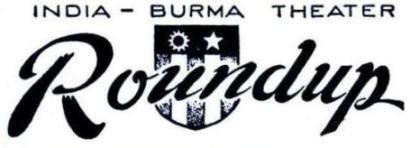
JUNE 7, 1945
Adapted from the original issue of India-Burma Theater Roundup shared by Linda James
Copyright © 2009 Carl Warren Weidenburner
Related articles in this section: